Posted by Doug Plummer on July 18th, 2007

I’ve not posted here for the last month, as I’ve been deep into computer management issues. Creativity has been at a low ebb, as has been anything cogent to say about the process. But I’m on the road now, which always gets me creatively engaged with my surroundings.
We’re visiting friends on Salt Spring Island, which is between the BC mainland and Vancouver Island. The hills and sea coves are spectacular, of course. Walking with friends at Ruckle Provincial Park, I explored the woods and beach with my camera as they conversed. I felt like the off leash dog lingering behind to check out the compelling scents along the trail.
Washed up on the rocky coast, with all the other woodsy flotsam, was a huge stump with its ring of roots, whitened by many seasons in the sun. I’m a sucker for these sorts of things. No matter that this is a well worn rut in photographic explorations–the reason photographers are attracted to eroded rocks and convoluted trees is that they’re interesting natural forms to stare at. I am not above joining the fray, so long as I get to do it in relative solitude.
The more I started poking around this stump, the more I appreciated how this was one of the more complex shapes in a natural object that I had encountered in awhile. By taking pictures of it, sitting in it and looking, and looking, and extracting more shapely photographs, and looking some more, I got to “know” this thing. I crawled in close, and I backed off and saw how it sat in the larger landscape. I began a relationship.
We had about 30 minutes together, this stump and I. Most people, and me in another mood, would have walked by, glanced at the stump, thought, hey, that’s cool looking, and gone on their way. The camera was an excuse to linger and really feel what this spot was like for the duration.




Posted by Birgit Zipser on July 13th, 2007
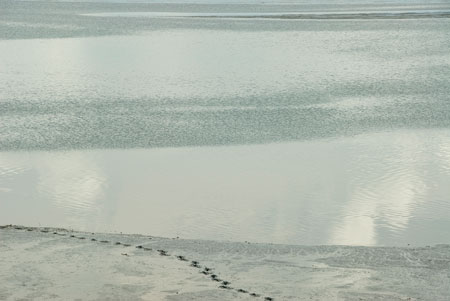
I am visiting the Wattenmeer (mud flats) where I grew up.
more… »
Posted by Steve Durbin on July 10th, 2007
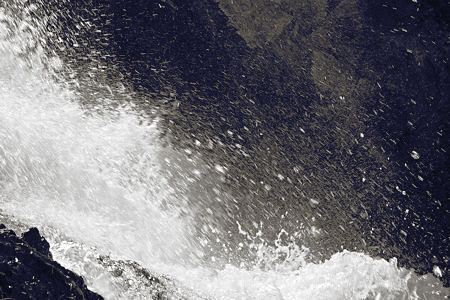
I could be accused of being stuck on my waterfall project lately, but my excuse is that it seems to connect to various other recent posts and comments. Anyway, it’s the work that I’m closest to at the moment, so it makes sense to write about it while it’s fresh. Fresh enough that the ideas are still churning around without order, which in truth is how I like it. I’m inclined by nature to let things ferment in their untidiness, not attempting to resolve or define, hoping/knowing that that will happen on its own eventually.
So this post is partly a record of the connection between concepts and execution, between thinking about the photographs and making them. In the present case, this is a pretty loose and interactive connection, perhaps similar to David’s “chickens, then eggs, then more chickens…” or Leslie’s “dialogue with the idea going back and forth with the making in a pretty comfortable way.” Karl also has been considering the role of concept in art, and I think his question, “Is art something we make, or discover?” is about the same thing. In other words, do we create from a concept or learn by doing? The answer, of course, is that both go on at once, but how it plays out is always different, even for me alone on this single project.
more… »
Posted by Steve Durbin on July 3rd, 2007
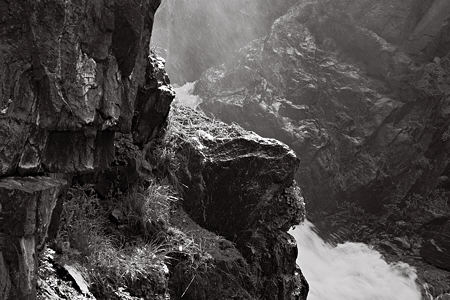
As regular readers may know, I’ve been intrigued by resemblances noted between some of my photographs, particularly the recent waterfall series, and those of Clyfford Still, the eccentric Abstract Expressionist determined to go his own way, living most of his life in relative isolation from the art world. Over the last year or so, I have sensed some movement toward abstraction in my work and I would like to explore that. What is abstraction for me? How does it relate to representation? What and how does it mean? I’m not aiming for a more sophisticated Statement, I’m just trying to better understand what I do and what others have done and what I can learn from it.
more… »
Posted by Birgit Zipser on June 29th, 2007
Looking for imaginative interpretations of perspective by Vincent van Gogh, I came across his Still Life with Plaster Statuette, a Rose and Two Novels. It reminded of someone else’s still life posted earlier on A&P that was critiqued for grapes that seemed to be sliding of an underlying cloth.
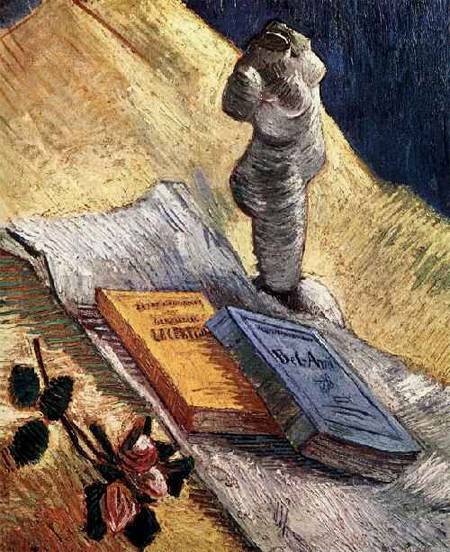
more… »
Posted by Arthur Whitman on June 26th, 2007
My taste in art—especially painting and drawing, but also other mediums—tends towards the strange, the mutant, the science fictionesque. This isn’t because I hate nature, but rather because I feel that art should offer something else, a surrogate (as Jackson Pollock once famously said to Hans Hoffman, “I am nature”). This kind of stuff probably isn’t to everybody’s taste, but what the hell.
I’ve been interested in Nava Lubelski’s paintings for something like three years. They seemed a bit lightweight when I first discovered them at Boston’s OHT Gallery. They’ve grown on me since then and I think the pieces themselves have gotten less uneven. Her method is unusual. She stains and splatters her canvases with thin washes of ink and acrylic paint in different colors. She then hand-stitches thread (again in various colors), tracing the outlines of the stains and creating new patterns as well. Some her recent canvases even have holes in them; A Lie About Birds and Bees is an impressive example. The results are reminiscent of abstract expressionism, as well as the post ab-ex tradition of color field painting. They also evoke birds-eye views of landscape or snorkeling—favorite themes of mine. At their best, the canvases are fascinating, intricate things.
In her artist’s statement, Lubelski describes her process in terms foreign to those of the stereotypically masculine world of abstract expressionism. She describes her staining as “spoiling” and her stitching as “mending”. The pieces are meant to suggest a duality of accident or wildness versus care and precision. I’m not a woman, but I do find this approach congenial.
Lubelski is also the author of a book: The Starving Artist’s Way. I haven’t read it, but it appears to be a sort of bohemian do-it-yourself guide. Her website also features several drawings and mixed-media sculptures (my favorite).
Posted by Steve Durbin on June 26th, 2007
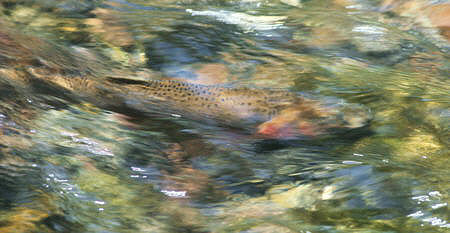
Are artists who ignore potential political impact of their work irresponsible? If the work is subject to misinterpretation or misuse (and what isn’t?), is it the job of the artist to consider this in advance? Is self-censorship in the service of your own beliefs necessary?
more… »









